When I hear the word “Algarve” I think faraway fairy tale lands that are not real. It’s Portuguese translation is from an Arabic term meaning “the west”. Historic ruins of Neolithic, Chalcolithic, Roman, Moorish, Christian Crusades all mingle together throughout Europe and show up as small fishing villages in the Algarve that have transformed into tourist beaches, apartments and golfing meccas. We still see fishermen casting lines off 75 meter cliffs and circling nets around their skiff, ancient dolmens and megaliths, but these are mere shadows of the tour boats, mini tour trains, hop on-off busses and non Portuguese languages that are relatively fluent throughout. The Algarve has embraced tourism as their top revenue earner. Portuguese tourism employs 1 million people; 10% of their population; 17-20% of the national GDP. Choosing to travel in October has offered us some less crowded days. Many of the apartments are shut for the winter and may start opening up again in March. There is a calmness that is felt here. While drivers are confident, they are not aggressive and leaning on their horns. Retired seniors reside here from around the world but rarely do we hear a siren if one of them falls or has a cardiac event.
We rented a car at the Lisbon airport after a week of recovering from jetlag and seeing some highlights of this historic city and headed out of town. We did manage to get onto a toll road mistakenly and go through the wrong portal so there will be a fee or a fine coming. It takes about 3-4 weeks. Love it! We managed to set our Google maps to “Avoid Tolls” and continued on the slow road!

Out of the Lisbon Province to the Alentejo with its abundance of cork trees, grapes and olives, we found the coast and hugged it. We passed the large refineries and ocean port that is the town of Sines. Our host in Almada had recommended we don’t go there. Ugly. A lunch stop at a quietly contrived town called Porto Covo felt like a closed timeshare operation that was once a fishing village looking out to the port of Sines. Along all the coasts are documented pilgrim trails, walking routes that follow the coastline, mountains, and traverse the countries. These old routes are well marked and explained throughout every town we visited. Some were famously leading to the Camino de Santiago in Spain.
We booked a 2 bedroom apartment in the small town of Carvoeiro near Lagos and Portimâo in the Faro region.


Upon arrival our host, Valentina, showed us the pool, the tricky toilet – “flush, wait, hit the tank and it will fill”, the pizza restaurant, and the direction to the beaches. Off she went and we had a nap.
After our nap we poked around, walked down the hill into the Praia de Carvoeiro town, then headed to the pizza restaurant for dinner around 9pm.

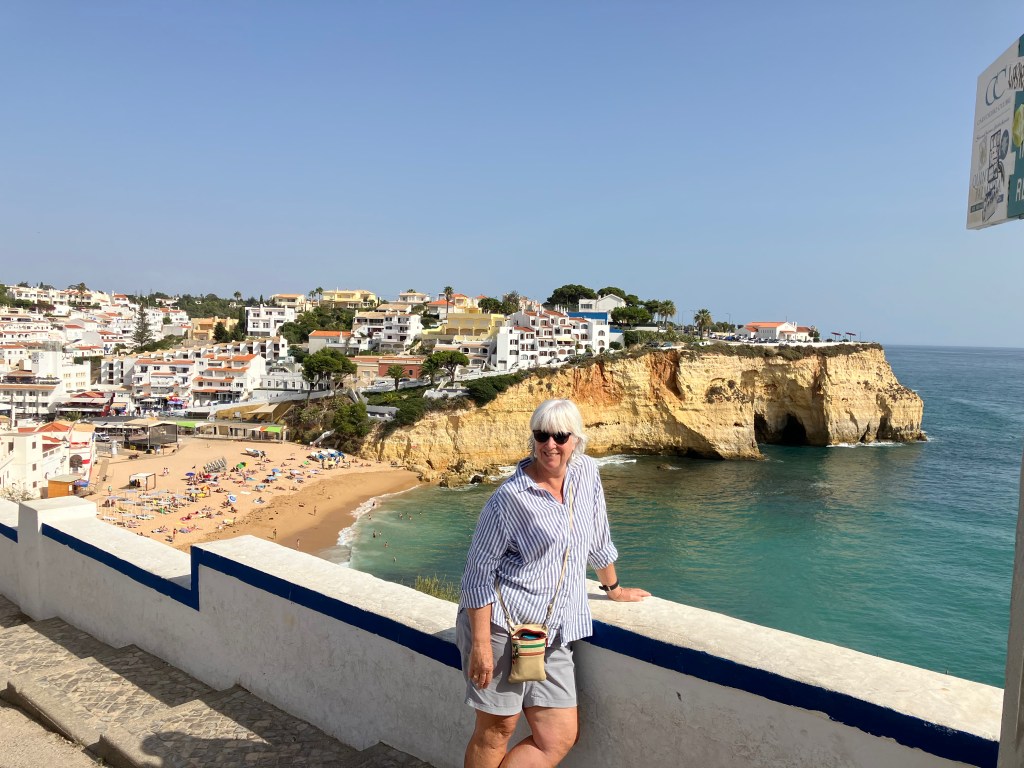

Normal in Lisbon and Spain as far as we could remember. The patio was packed. The tables were mostly British and German. The prices were at least double what we had seen in Lisbon. Yikes!! And it was mediocre. The pizza crust was thin like a lavash bread with a skif of cheese and tomato sauce with a chosen topping. I chose prosciutto. 1 slice was torn into 4 and sprinkled on my base. Marnie had the same base with 1 mushroom sliced and distributed over. These were 15 Euros each. Literally cheese and cracker dinner. Oh well, we were dining alfresco on October 6 in the romantic Algarve!! First world problem!!! Next morning we provisioned at a local grocery chain. The lettuce!!




One of the coastal walks is the Algo Seco. This boardwalk trailway follows part of the old Fisherman’s trail that rounds the southern edge onto the western edge of Portugal. Algo Seco climbs out of the Carvoeiro beach (Praia) and wanders east towards Albufiera. Along the way the trail forks towards the Atlantic and into the cliffs are grottos and shell packed rock that make up the geology of the coastline. The boardwalk comes to the end near many fancy hotels and villas and down a stairway is a well regarded restaurant and bar that oozed of expense. So we turned around and found our happy hour by the pool.
Sagres is a small town that is full of surfers, fishermen and tourists. There is a fortress that encompasses the whole point of land that creates the Atlantic sided corner of Portugal. The fortress and town celebrate the 14th century history of its very own Henry the Navigator who was son of a king and queen and lord of the take. He is celebrated for his voyages during the “age of discovery” and the navigation school that he started in Sagres. It is still operational today. He heads up the enormous Age of Discovery statue in Lisbon as well. High cliffs with sink holes and ocean filled caves below breathe in an out with every swell. We chose to pay the fee and walk the perimeter of the fortress. Fishermen are allowed in one hour before the tourists and they line the cliffs 100 feet above sea level with their rods and 5 gallon pails catching fish to sell to local restaurants. Oblivious to the tourists they lean over the edge looking at where their hooks may lie. It seemed they caught the rocks more often than the fish but enough fish to make it worthwhile. My knees went soft every time they cast out and looked below.
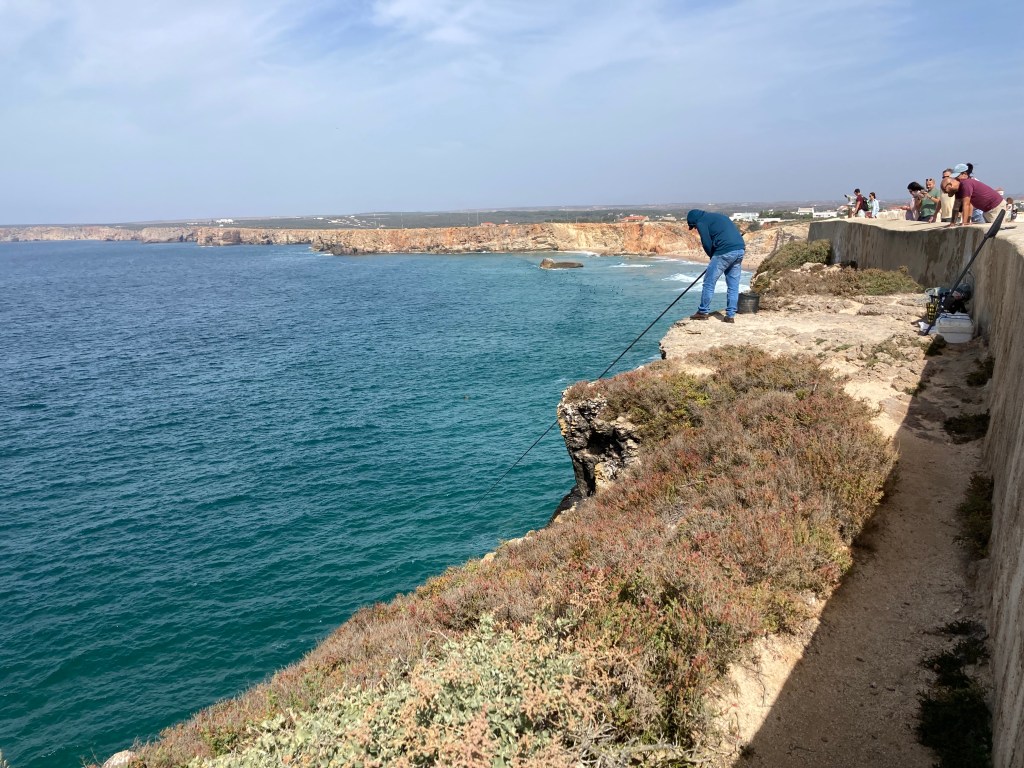


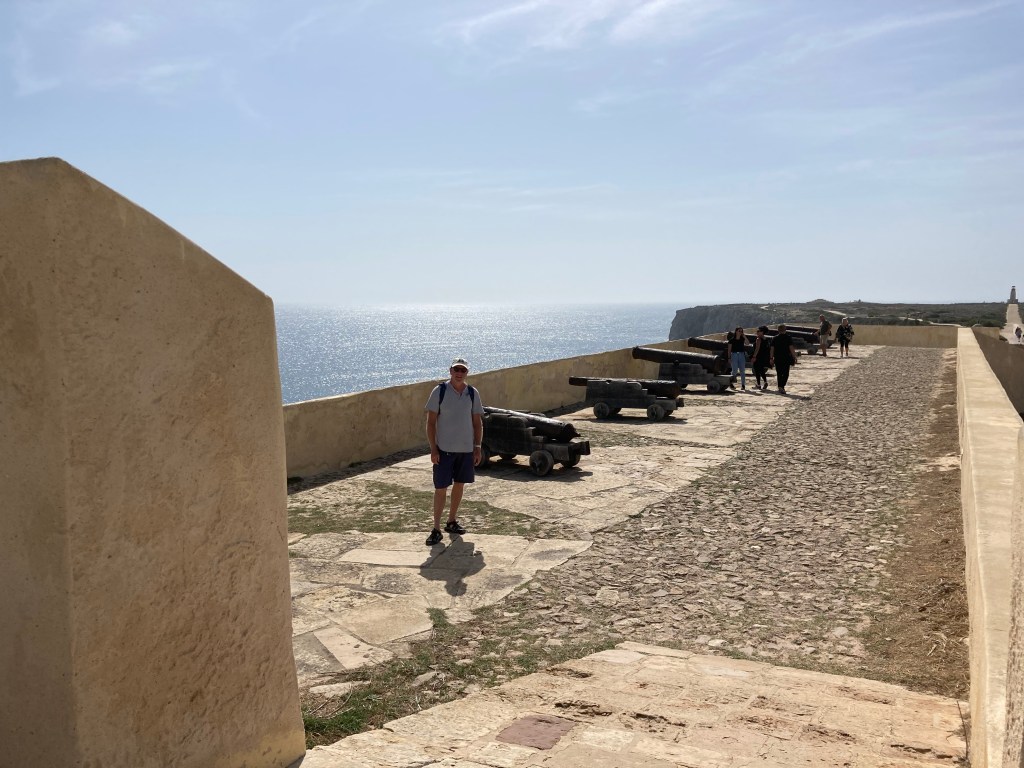
Lagos is a gem of a city that bustles with tour boats, restaurants, hawkers and gorgeous cobblestones in black and white. While it exudes pretty tourism, it cannot be forgotten that it also has the museum that was once the first slave market in Europe. We weren’t ready to cast the horrific shadow of slave history on our day. But we will revisit this exhibit with a open and prepared mindset and attempt an understanding of this chapter in history. Hopefully it now informs the public about respect for human dignity, basic human rights, and mutual understanding in the face of a history rife with abuse and violence toward unaware minorities.
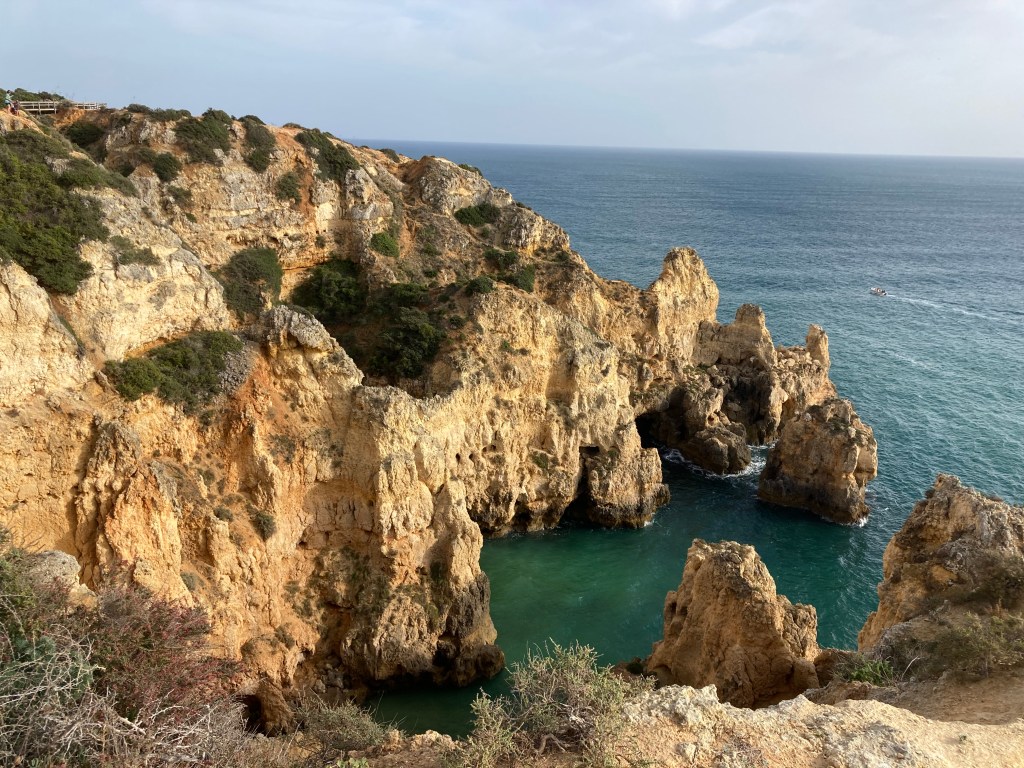
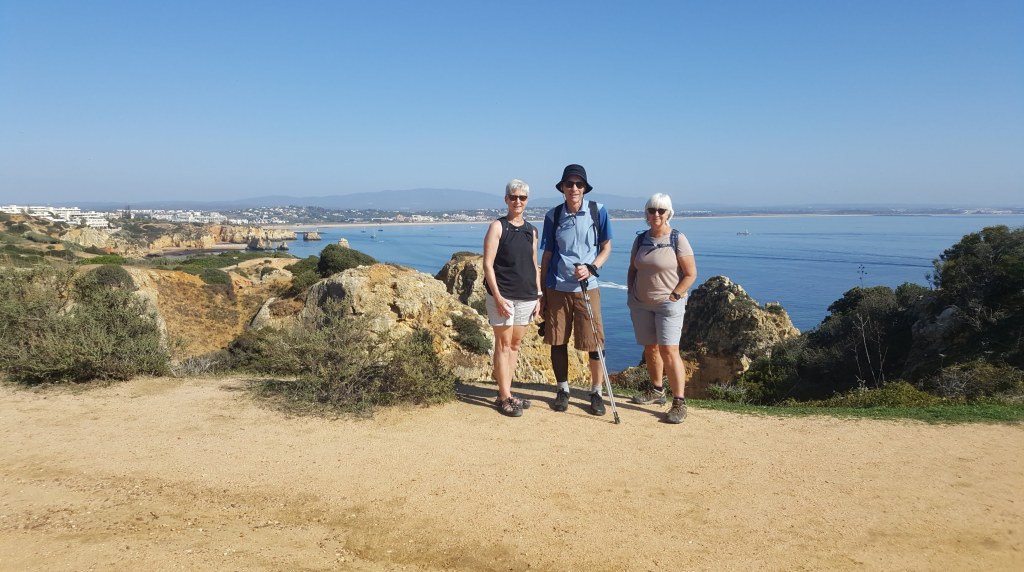



The coastline north and south of Lagos is a contradiction of vast sand beaches and rugged precipitous cliffs. We spent hours walking along the Rota Vicentina walkway admiring the scenic cliffs, chasms and sink holes created about 100 million years ago and more recently it saw a Roman Temple, Moorish Temple and a Christian Hermitage near the lighthouse. These ruins were not evident to us… Always lots of layers to the history here.
The detail of the cobblestone work was worth capturing.
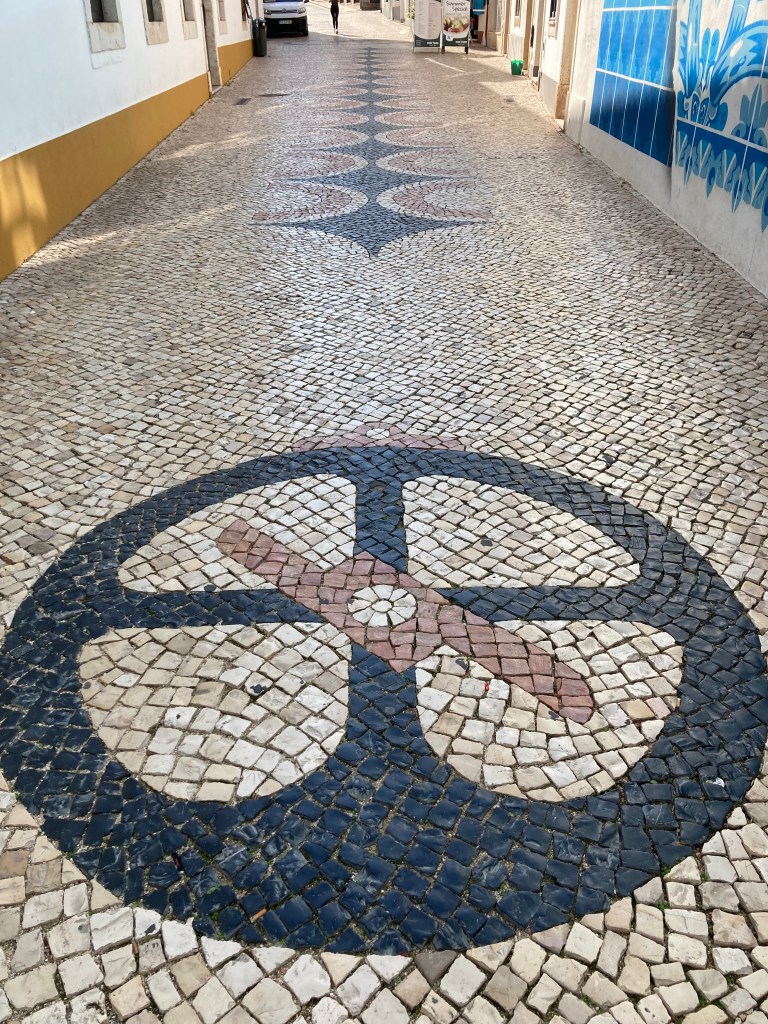
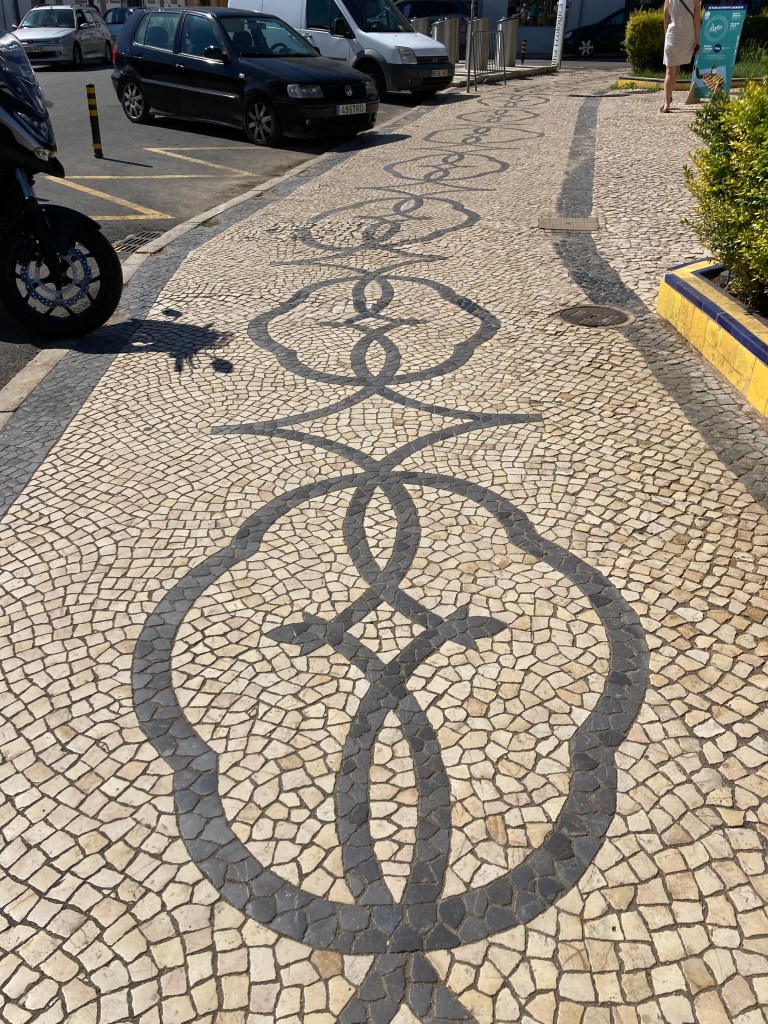
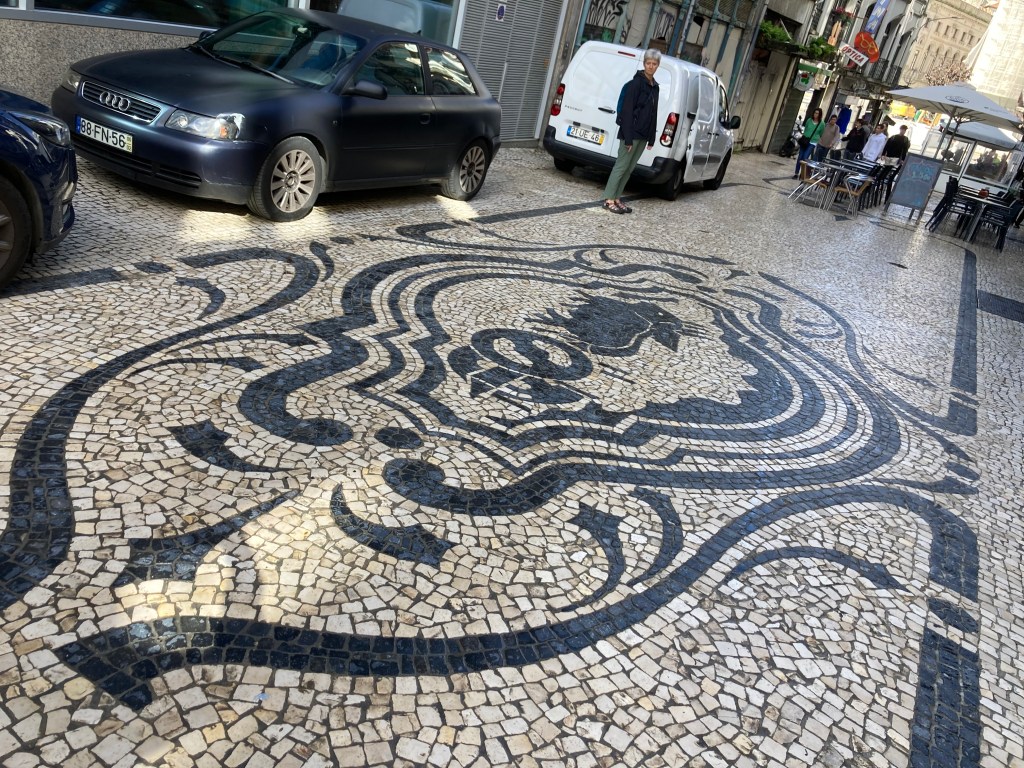

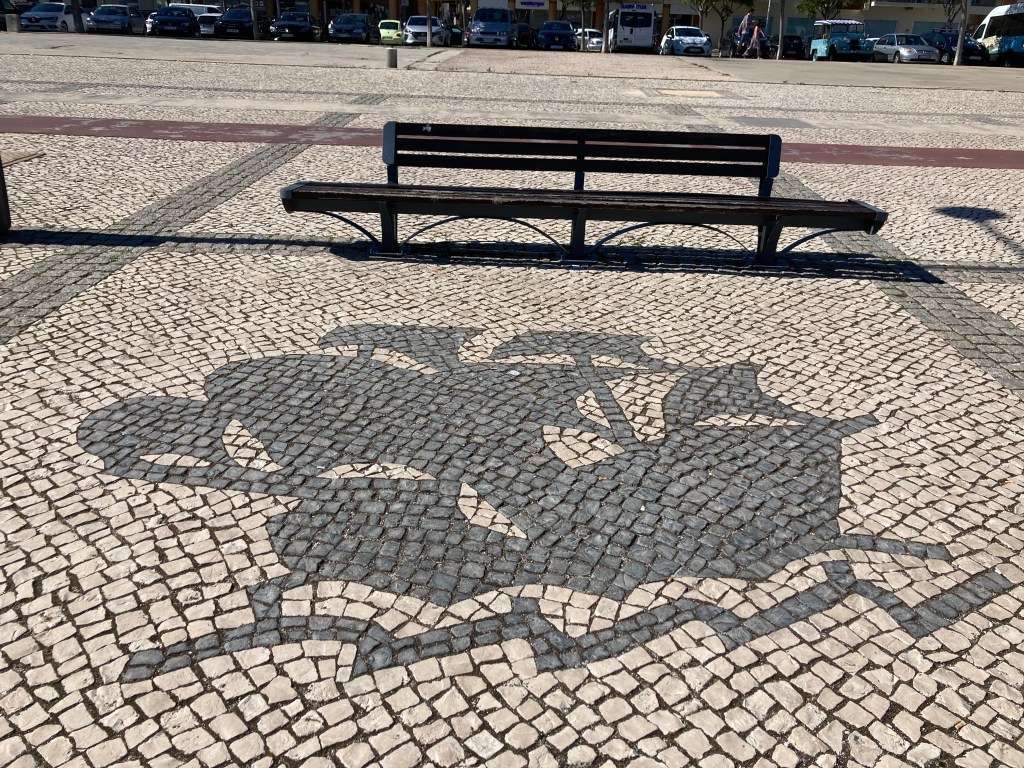
Old town Portimâo is a larger city in the Algarve without that touristy party vibe that Almada, Lisbon and Lagos seemed to have. Their large museum was in honour of their history of sardine harvest and the fishing culture.

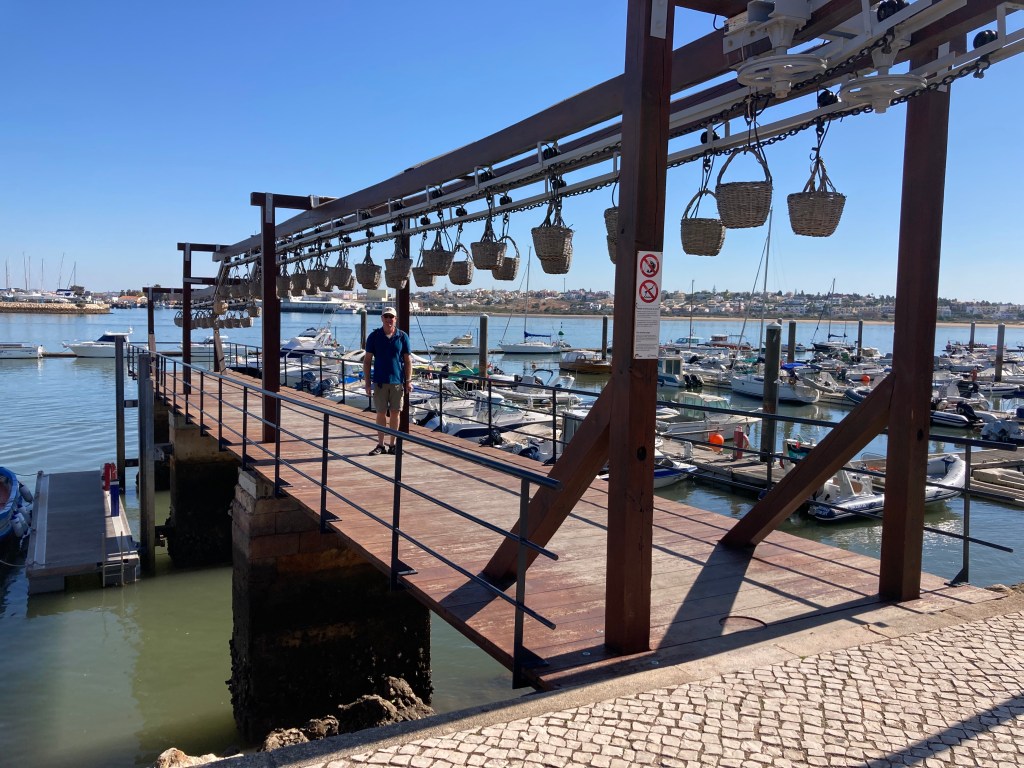

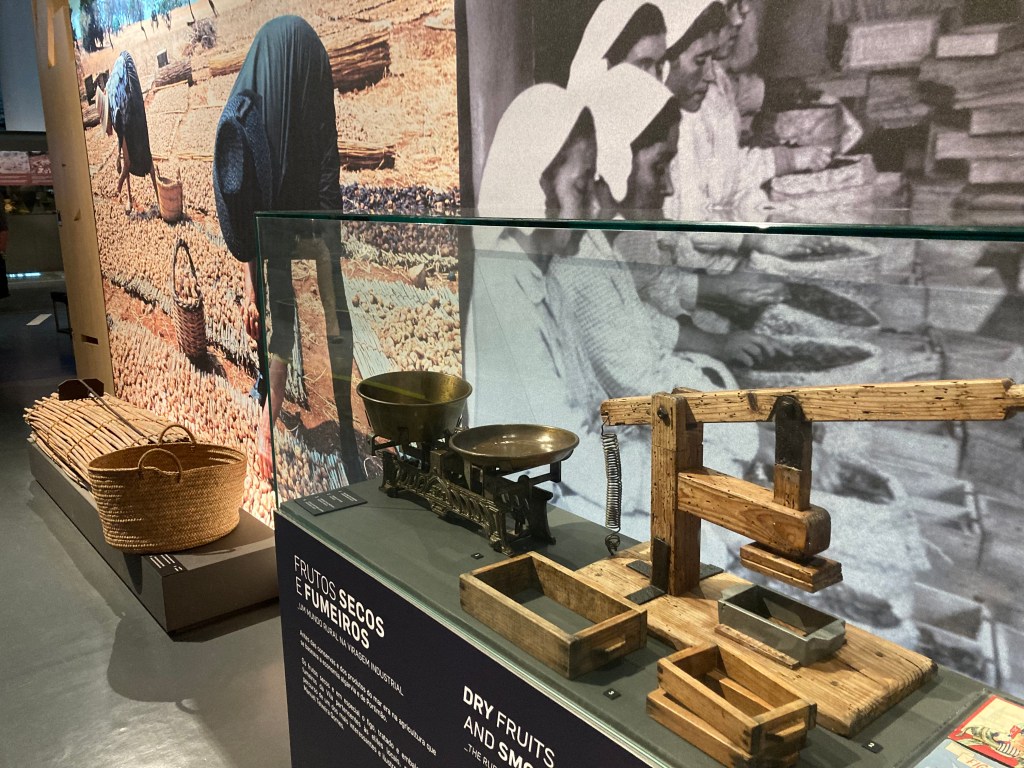

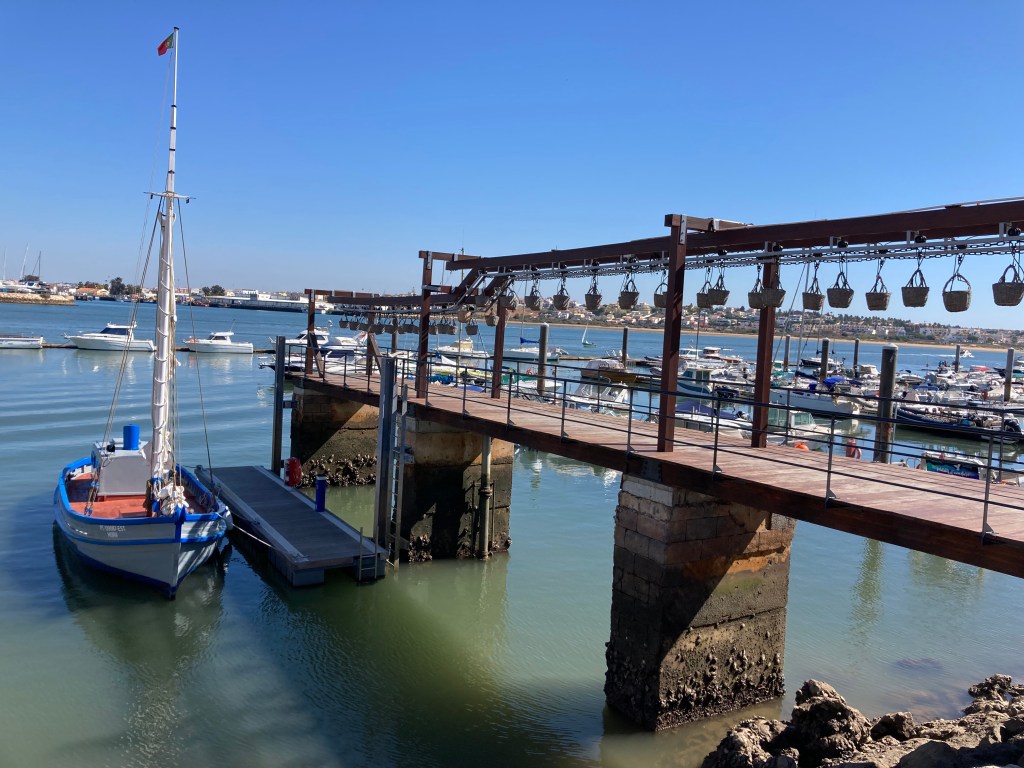
Throughout Europe there is evidence of prehistory in the form of megaliths and dolmens. While in France 3 years ago we visited the Carnac stones. These fields of thousands of enormous stones lead us to understand that there are many of these megaliths spotted around the continent. So while driving home from Sagres we saw a sign “megalithico” we had to stop! We found a trail and a pile of rocks. Upon researching when we got back, we saw a pile of rocks and missed the megalith. We did manage to visit some funerary temples just outside of Portimâo that were restored and very interesting.

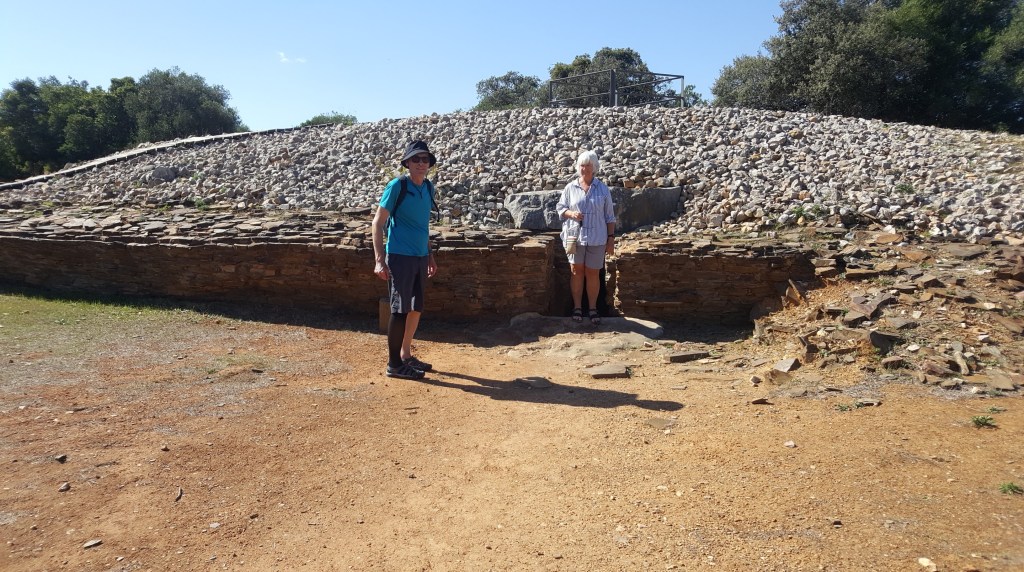
Probably our favourite part of our stay there was that there were still places to find ourselves without crowds. The beach below our apartment had a set of stairs to it and a tiny beach. It looked out over the Atlantic towards Africa. Along the fisherman’s trail there were always a few anglers leaning over the cliffs. The many tour boats whiz by and fishermen in open runabouts poke along in the nearer waters pitlamping for squid. Further out the lights of freighters on the shipping channels slowly disappear. Sunset on the cliffs was a 5 minute walk and involved Vinho Verde and lots of perfect photo op’s.




Our last day in Carvoeiro was spent soaking up the beach and swimming in the Atlantic. We were heading off to Évora and Porto and a weather change. Another chapter in life on the road with foodwinetravelrepeat. The mysterious Don of Sandeman, a church of bones and more architecturally impressive churches than you can ever pay to see are right around the next corner. Adeus, for now, from Portugal!

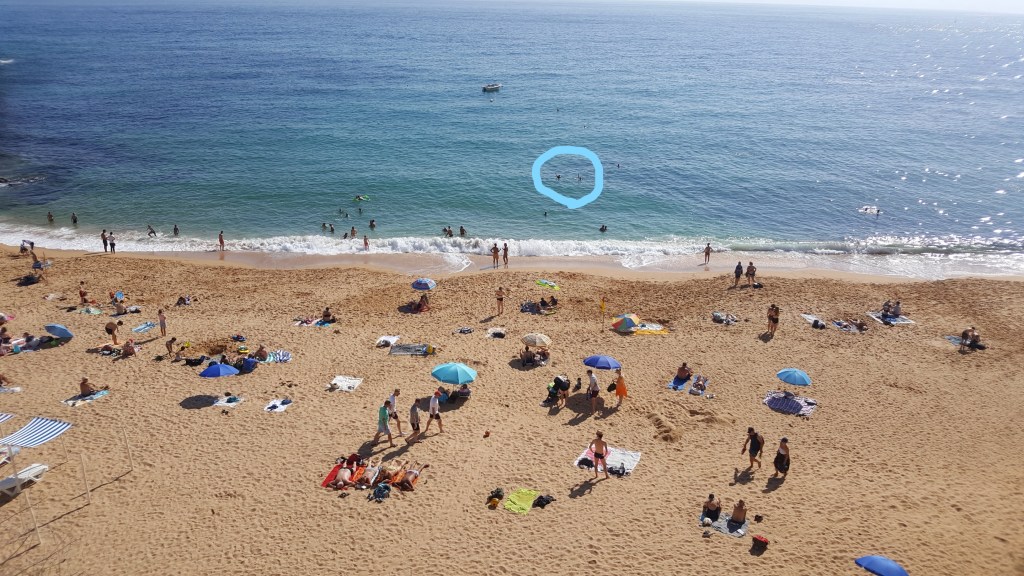

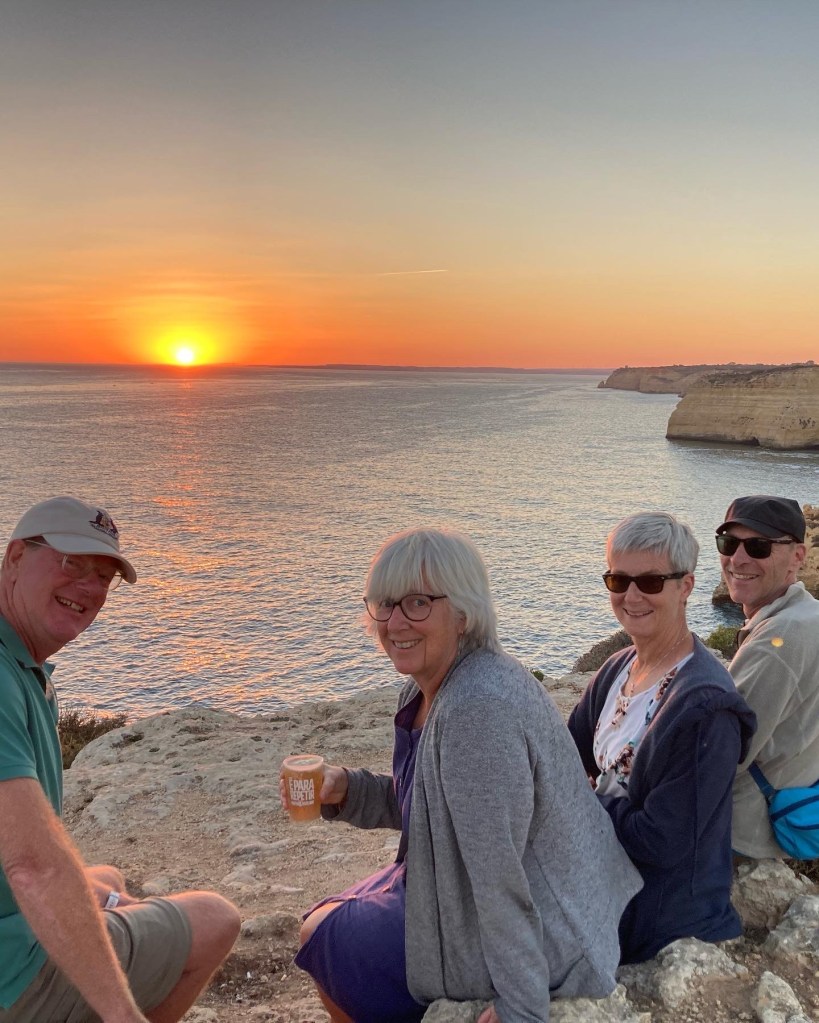
My cousin who lives in London has a villa there and wanted to do a Reno on it but
it was cheaper to take it down and rebuild and it’s in the process, looking over the
sea on the golf course.
Sent from my iPad
>
LikeLiked by 1 person
I bet it’s beautiful
LikeLike